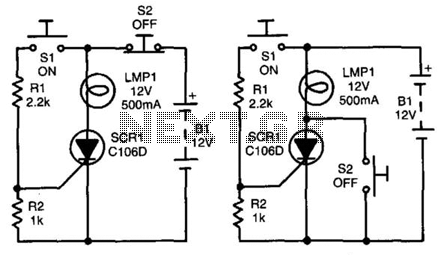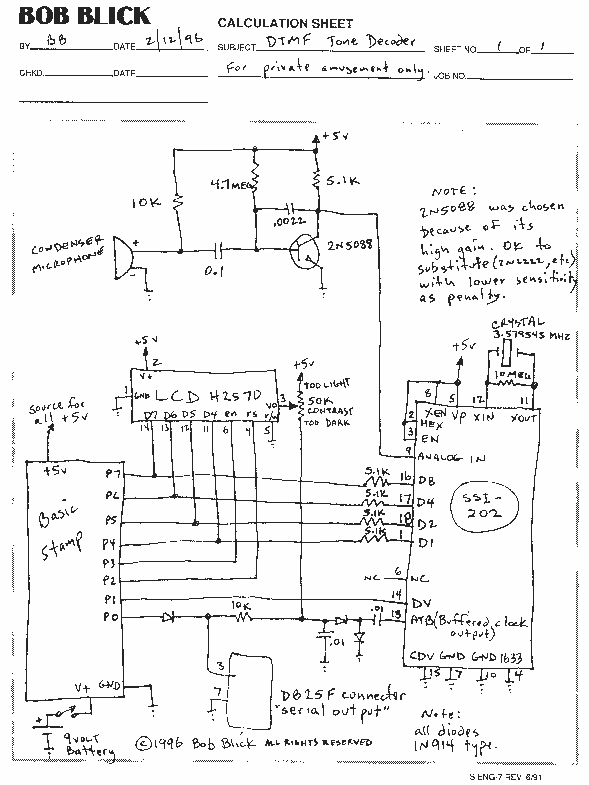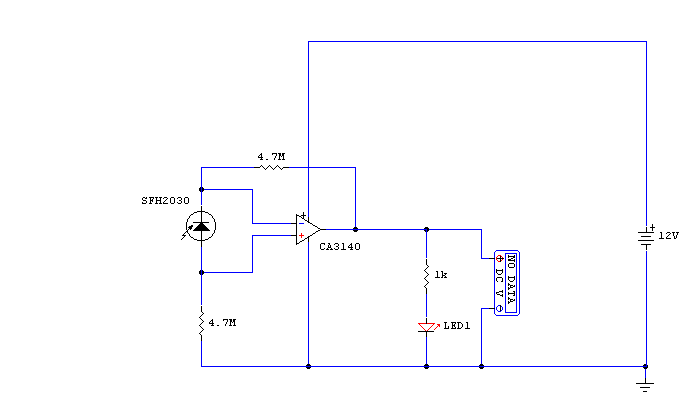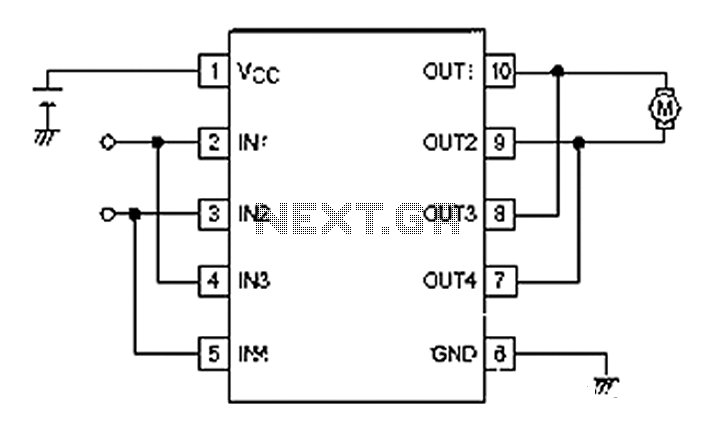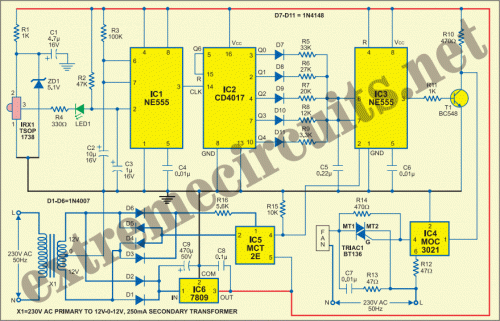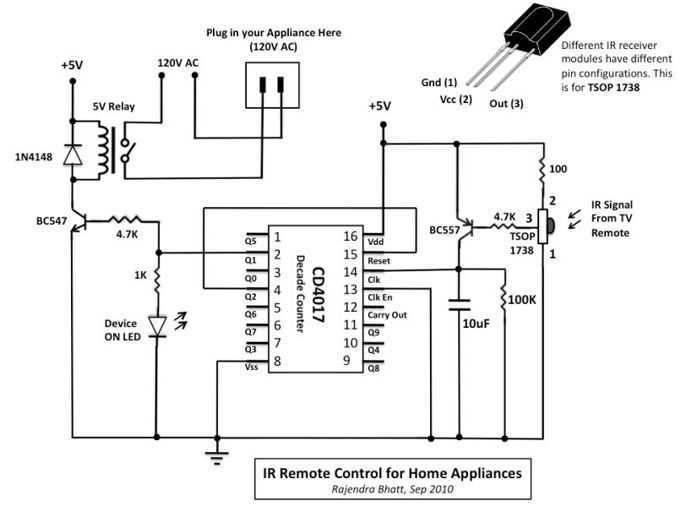
Three-channel tone control

The input signal is fed through SKI to the first active stage, which is constructed around IC1. This stage is configured as a non-inverting amplifier, with its gain determined by the ratio of R3 and R1. In this configuration, the gain is set to unity. This initial stage serves to isolate the subsequent stage from any loading effects. The output from IC1 is then routed through three frequency shaping networks to IC2. The three networks, which are built around variable resistors RV1, RV2, and RV3, are also integrated into the feedback path of IC2, which is another inverting operational amplifier stage. The components associated with the three variable resistors are selected to provide the necessary frequency control.
The circuit described operates as a signal processing system, where the input signal is first buffered and amplified by IC1, ensuring that the characteristics of the input signal are preserved while preventing loading on the subsequent stages. The non-inverting amplifier configuration allows for a straightforward gain setting, which is crucial for maintaining signal integrity.
Following the amplification stage, the output is processed through three frequency shaping networks. These networks are essential for tailoring the frequency response of the overall circuit. Each network is associated with a variable resistor (RV1, RV2, RV3), which allows for real-time adjustments to the frequency characteristics of the signal. This flexibility is particularly useful in applications requiring fine-tuning of frequency response, such as audio processing or filtering applications.
The output from these networks is then fed into IC2, which functions as an inverting operational amplifier. The feedback path from the output of IC2 back to its inverting input is influenced by the three frequency shaping networks, allowing for precise control over the gain and frequency response of this stage. The design choice of using variable resistors in the feedback path enables dynamic adjustment of the circuit's performance, accommodating various operational requirements.
Overall, this circuit design exemplifies a modular approach to signal processing, where each stage is carefully designed to optimize performance while maintaining flexibility in the adjustment of frequency response. The interaction between the non-inverting amplifier and the inverting amplifier, along with the frequency shaping networks, creates a robust system capable of handling a wide range of signal processing tasks.The iriput signal is fed via SKI to the first active stage built around ICl. Configured as a noninverting amplifier whose gain is set by the ratio of R3 and Rl. In this case, the gain is set at unity. This initial stage is required to isolate the following stage from any loading effects. The output from ICl is fed via three frequency shaping networks to IC2 The three networks built around RV1, RV2, and RV3 are also included in the feedback path of IC2, another inverting op amp stage. The components associated with the three variable resistors are chosen to give the required frequency control.
The circuit described operates as a signal processing system, where the input signal is first buffered and amplified by IC1, ensuring that the characteristics of the input signal are preserved while preventing loading on the subsequent stages. The non-inverting amplifier configuration allows for a straightforward gain setting, which is crucial for maintaining signal integrity.
Following the amplification stage, the output is processed through three frequency shaping networks. These networks are essential for tailoring the frequency response of the overall circuit. Each network is associated with a variable resistor (RV1, RV2, RV3), which allows for real-time adjustments to the frequency characteristics of the signal. This flexibility is particularly useful in applications requiring fine-tuning of frequency response, such as audio processing or filtering applications.
The output from these networks is then fed into IC2, which functions as an inverting operational amplifier. The feedback path from the output of IC2 back to its inverting input is influenced by the three frequency shaping networks, allowing for precise control over the gain and frequency response of this stage. The design choice of using variable resistors in the feedback path enables dynamic adjustment of the circuit's performance, accommodating various operational requirements.
Overall, this circuit design exemplifies a modular approach to signal processing, where each stage is carefully designed to optimize performance while maintaining flexibility in the adjustment of frequency response. The interaction between the non-inverting amplifier and the inverting amplifier, along with the frequency shaping networks, creates a robust system capable of handling a wide range of signal processing tasks.The iriput signal is fed via SKI to the first active stage built around ICl. Configured as a noninverting amplifier whose gain is set by the ratio of R3 and Rl. In this case, the gain is set at unity. This initial stage is required to isolate the following stage from any loading effects. The output from ICl is fed via three frequency shaping networks to IC2 The three networks built around RV1, RV2, and RV3 are also included in the feedback path of IC2, another inverting op amp stage. The components associated with the three variable resistors are chosen to give the required frequency control.
